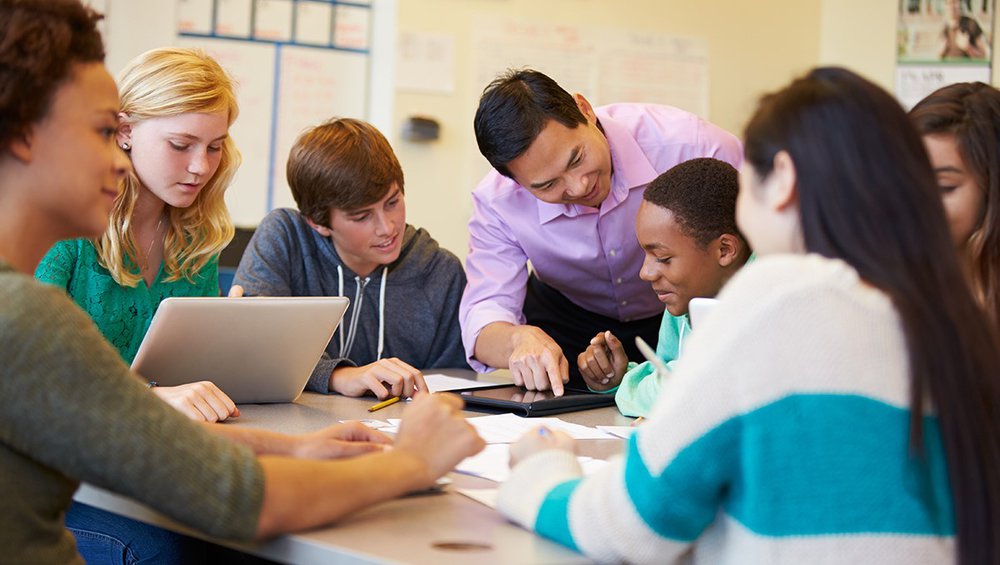In an interview with CUE, Esther Wojcicki, author of Moonshots in Education: Launching Blended Learning in the Classroom, said, “I also learned that there is confusion between blended learning, flipped classroom, and project-based learning.”
We agree!
Many educators are confused about these three terms. They often identify with one of them because they were exposed to it through personal or district level-learning opportunities. In addition, once educators learn about one of these terms they will identify their teaching practices within a community where they are welcomed and supported through personal and district-level support systems.
When it comes to flipped learning, there are many support systems for teachers. The Flipped Learning Network, online community forums, and other community avenues allow educators to share best practices and tech tools like Chatterpix, Touchcast, and ClassFlow.
The biggest misconception that we hear about flipped learning is that it’s all about students just watching videos. Teachers who flip will tell you that this is not the case. To help set the record straight, the Flipped Learning Network has defined flipped learning as “a pedagogical approach in which direct instruction moves from the group learning space to the individual learning space, and the resulting group space is transformed into a dynamic, interactive learning environment where the educator guides students as they apply concepts and engage creatively in the subject matter.”
The Flipped Learning Network also defines the four pillars of flipped learning.
The Four Pillars of F-L-I-P™
Flexible environment: Educators create flexible spaces where students choose when and where they learn. Educators who flip their classes are also flexible in their expectations of student timelines for learning and in their assessments of student learning.
Learning culture: In a flipped learning model, in-class time is dedicated to exploring topics in depth and creating rich learning opportunities. As a result, students are actively involved in knowledge construction as they participate in and evaluate their learning in a personally meaningful manner.
Intentional content: Flipped learning educators determine what they need to teach and what materials students should handle on their own. Educators should deliver content in a way that maximizes classroom time and leads to student-centered, active learning strategies that vary with grade level and subject matter.
Professional educator: The role of a professional educator is even more important, and often more demanding, in a flipped classroom than in a traditional one. During class time, educators need to observe students, providing them with instant feedback and assessment. While educators may take on less visibly prominent roles in a flipped classroom, they remain the essential part that enables learning to occur successfully.
This definition differentiates flipped learning from blended learning and project-based learning. Flipping is a technique paired with a mindset change. The technique is moving the direct instruction out of the classroom, and the mindset change is thinking differently about the classroom space. Although flipped learning is becoming a common term to many educators, it remains an uncommon pedagogical approach to traditional classroom teachers. We encourage you to explore flipped learning and to embrace a mindset that focuses on improved student learning.
 Aaron Sams operates the education consulting firm Sams Learning Designs, is an Adjunct Professor at Saint Vincent College. Aaron has co-authored seven books on the flipped classroom concept. You can follow him on Twitter @ChemicalSams.
Aaron Sams operates the education consulting firm Sams Learning Designs, is an Adjunct Professor at Saint Vincent College. Aaron has co-authored seven books on the flipped classroom concept. You can follow him on Twitter @ChemicalSams.


 Justin Aglio is the Director of Innovation at Montour School District in Pennsylvania. Recently, he was mentioned as a 2016 “Edtech and Elearning Top 100 Influencer” by Onalytica. You can follow him on Twitter
Justin Aglio is the Director of Innovation at Montour School District in Pennsylvania. Recently, he was mentioned as a 2016 “Edtech and Elearning Top 100 Influencer” by Onalytica. You can follow him on Twitter 








